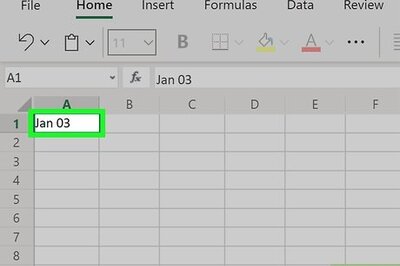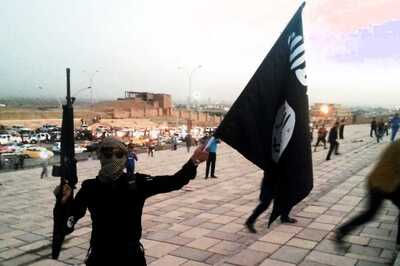
views
New Delhi: For the past 24 hours, an intense game of political one-upmanship is being played out in Uttar Pradesh. On one hand is the BJP, led by Chief Minister Yogi Adityanath, and on the other is Akhilesh Yadav on behalf of the SP-BSP alliance.
The fight is over a small, most backward caste identity-based political outfit — the Nishad Party — and primarily for the one crucial seats of Gorakhpur. The seat that has turned out to be the Achilles heel for the saffron party and Adityanath, in particular.
The prestigious seat, won by the chief minister himself in 2014, was lost by a slender margin to the Samajwadi Party (SP)-Bahujan Samaj Party (BSP) alliance in the bypoll held last year. Primarily, because of the “Nishad factor”.
The small political outfit, which came into existence only in 2015 had allied with the SP-BSP combine with Praveen Nishad being fielded as the opposition candidate. Praveen is the son of Niashad Party president Sanjay Nishad.
Now, it’s the same man, Sanjay Nishad, who is driving a hard bargain and giving leaders of both BJP and opposition alliance some tense moments.
Barely three days ago, Sanjay declared his allegiance to the opposition alliance at the SP office. Yadav, too, promptly announced Praveen as his party’s candidate from Gorakhpur.
However, big surprise came on Saturday evening, when pictures of Sanjay meeting the UP chief minister were released in the media. Soon, the Nishad party declared that it would snap ties with the SP-BSP combine. The BJP seemed to be left with the final smile.
A new pact with the Nishad Party was expected to be announced on Saturday. Sources said Sanjay and his MP son were slated to reach the BJP office this morning and a formal announcement of alliance with the BJP was to be declared, soon after.
However, that didn’t happen and suspense over the party’s final move is still awaited. This even while Yadav had already replaced Praveen with Rambhuyan Nishad, who has been a two-time MLA from the Kaudiram Assembly seat that he lost in 2012.
But the question is why this small outfit is suddenly so keenly sought-after by the political heavyweights and the answer lies in the caste dynamics.
Certain backward castes, defined under the sub-category of most backward class (MBC) within the larger OBC bracket, have been efficiently organised by the Nishad Party.
Though ‘Nishad’ itself falls under the MBC category, the political outfit stands for ‘Nirbal Indian Shoshit Humara Dal’.
The region of Gorakhpur has a strong presence of these castes, including Nishad, Kewat, Mallah, Majhi, Rajbhar, Gaund, Kashyap and Kachar. Of these, Nishads play a dominant role.
All these sub-castes have historically been in similar traditional professions like rowing, fishing and ferrying boats.
Sources say that in each of the 28 assembly constituencies in the Gorakhpur region, the MBC vote bank is between 30,000-50,000.
In the 2017 assembly election, the party forged an alliance with some smaller outfits and contested from about 10 seats. It received a respectable vote share with party chief Sanjay Nishad polling more than 20,000 votes in the Gorakhpur Rural seat.
In the Gorakhpur parliamentary constituency, the Nishad/Kashyap/Mallah/Kahar vote is around 19%. The total MBC vote share in the constituency is around 29%, while Muslims comprise about 13% of the total voters.
Dalit Chamars constitute around 8.5% and OBC Yadavs are estimated to be 7% of the voters. All this, if clubbed, clearly shows that MBC voters, among whom the Nishad Party has a sizeable presence, is the most defining factor of the polls here.
Similarly, in the neighbouring Bansgaon reserved constituency, Nishads and related sub-castes constitute around half of the total 25% MBC votes.
Dalit Chamars are around 14%, OBC Yadav’s are 10% and Muslim voters are estimated to be around 7%. These statistics prove how the Nishad factor is significant here as well.
Now both Gorakhpur and Bansgaon have been Adityanath’s personal stronghold. He held the Gorakhpur seat as an MP during 1999 and 2014. Hence, a defeat in the 2018 bypolls came a big personal setback for him. The chief minister cannot afford another defeat here in 2019.
In a scenario when Muslims/OBC’s and Dalits can be expected to be united under the SP-BSP umbrella, management of the crucial MBC vote naturally becomes the top-most priority for the BJP.
“Operation Nishad” had so far been successful in the sense that Nishad Party’s alliance with the SP had been broken. But will this small outfit finally come on board with the BJP, remains to be seen.
Sources in the BJP, however, say the deal will be materialised soon.



















Comments
0 comment